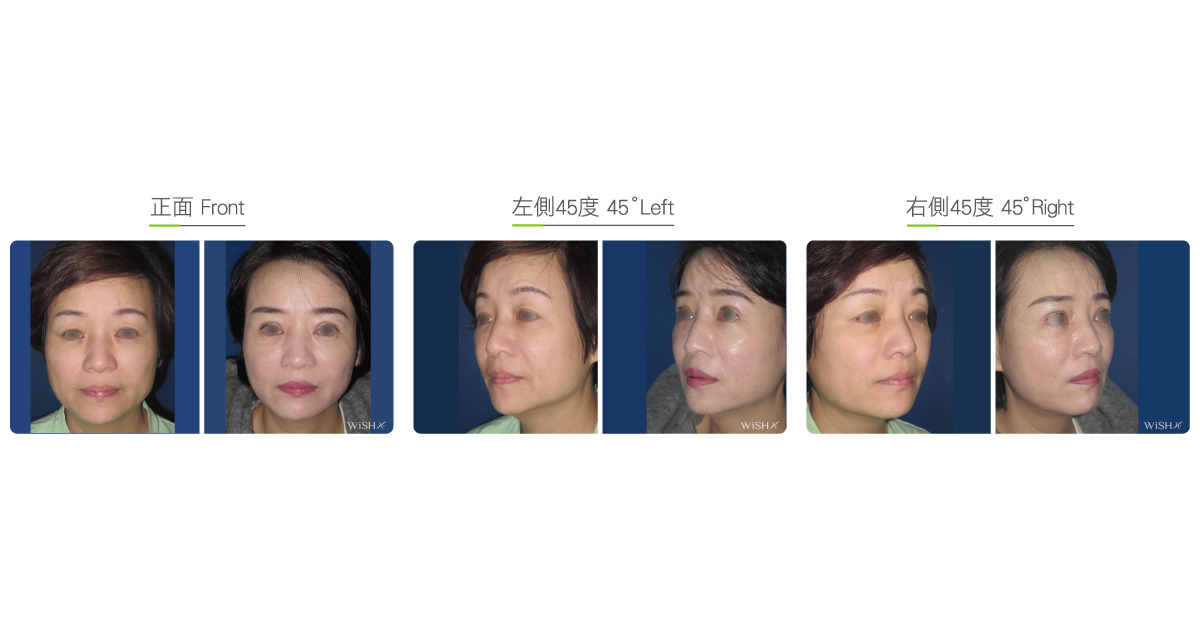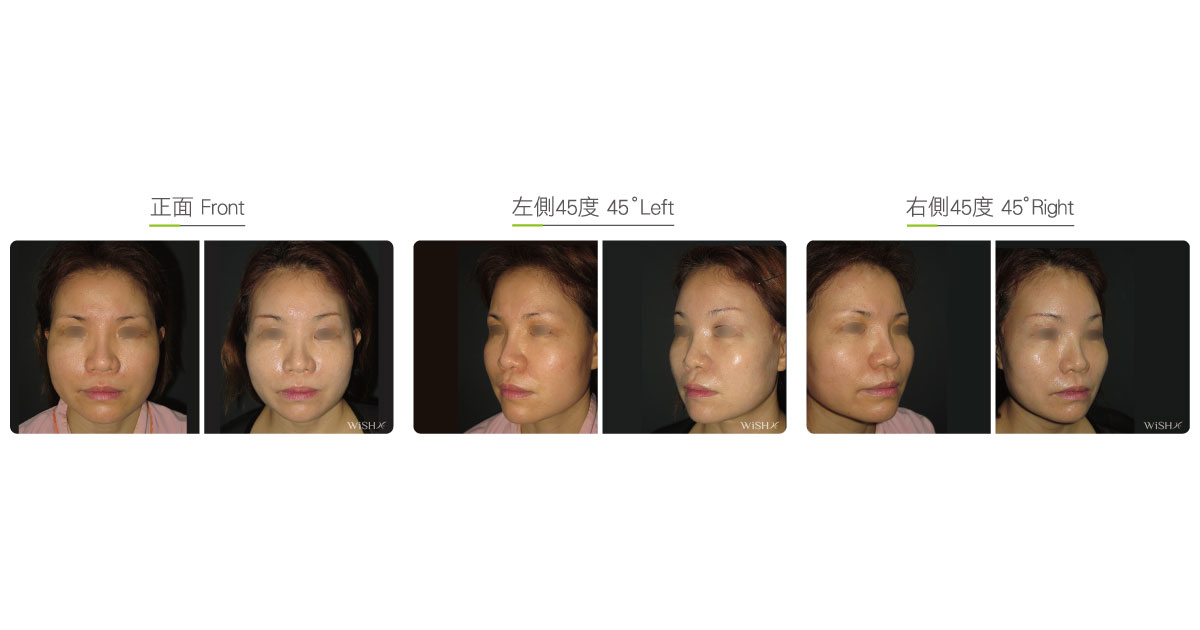Endotine Ribbon Lift
This surgery is similar to midface temporal fascial lift but uses fixation with an Endotine Ribbon implant to enhance the pulling force on the cheek and fat pads around the mouth. It is performed by making 1.5-cm incisions in the scalp at the temples. Via the incision, a doctor blindly detaches the skin and subcutaneous superficial fascia with tissue scissors to below the middle region of the cheek. Then, a long Endotine Ribbon implant is placed through this subcutaneous space to stretch the superficial fascia in a posterior–superior direction to the temples. The Endotine Ribbon implant may be adjusted to a suitable lift angle and tension to render optimal facelift effects. After the vector and tension of the Endotine implant is confirmed, it may be sutured to the deep temporal fascia of the scalp. Finally, any loosened skin near the incision is removed before the wound is closed.
This surgery requires a wider range of dissection for implant application. When combined with fixation by an Endotine Ribbon implant, it boasts more significant and longer-lasting effects than the conventional midface fascia lift, lasting 3–5 years or more on average. It is suitable for patients with thick and heavy skin or with a relatively wide face and sagging skin. However, its drawbacks are that the placed Endotine Ribbon implant may cause a temporary foreign body reaction or lump in the cheek, and excess tightening may result in cheek hollowing. Therefore, patients should consult surgeons about contraindications before undergoing this surgery.
Surgical conditions
Duration
- Type of anesthesia: IV sedation + local anesthesia
- Type of incision: An incision of approximately 1.5 cm in the scalp above the temple
- Recovery: 3–5 days
- Removal of sutures: 7–10 days
General instructions
No food and water on the day of surgery
- Rubbing or pressing the incisions on the forehead and scalp should be avoided for 1 month postoperatively.
- Hair dying or perming should be avoided for 2 months postoperatively to prevent unwanted irritation or allergy.
- Very good scalp care should be maintained for 3 months postoperatively to prevent hair loss.
Ideal candidates
- Individuals with thick skin and mild to moderate sagging.
- Patients with a wide face and midface laxity or hollowing.
- Patients who have undergone conventional midface fascia lift but not showing an obvious effect.
- Patients who have received thread embedding or Quill thread lift with insignificant results.
- Those who wish to complement the shortcomings of other facelifts.
Potential complications
- Scalp scars
- Local hair loss
- Poor wound healing
- Temporary foreign body reaction in the cheek
- Lumps, cheek depressions
- Incomplete correction
Surgical advantages
-
Surgical incisions are hidden in the scalp, leaving no scars on the face.
-
Assisted fixation using an Endotine Ribbon implant will make the results more significant and longer lasting.
-
Surgical trauma is small and recovery is rapid.
-
There is no risk of nerve or blood vessel injury, and it is highly safe.
-
It can be repetitively conducted, and the patient will maintain a rejuvenated and refreshed appearance.
Surgical drawbacks
-
There might be hair loss along the scalp incisions.
-
Scalp incisions may present with poor healing due to excessively tight sutures.
-
There might be occasional reaction to the Endotine Ribbon implant, lumps, or other temporary tactile abnormalities.
-
The cheek may become hollower due to stretching caused by the Endotine Ribbon implant.
-
The results may not last as long as a traditional facelift.



